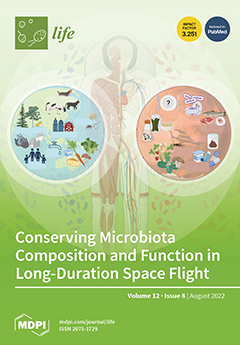Peanut is among the most important oil crops in the world. In the southern part of China, peanut is highly produced; however, the arable land is acidic. In acidic soils, aluminum (Al) inhibits plant growth and development by changing the properties of the
[...] Read more.
Peanut is among the most important oil crops in the world. In the southern part of China, peanut is highly produced; however, the arable land is acidic. In acidic soils, aluminum (Al) inhibits plant growth and development by changing the properties of the cell wall and causing the disorder of the intracellular metabolic process. Circadian rhythm is an internal mechanism that occurs about every 24 h and enables plants to maintain internal biological processes with a daily cycle. To investigate the effect of photoperiod and Al stress on the Al-induced programmed cell death (PCD), two peanut varieties were treated with 100 μM AlCl
3 under three photoperiodic conditions (8/16, SD; 12/12, ND; 16/8 h, LD). The results show that Al toxicity was higher in ZH2 than in 99-1507 and higher under LD than under SD. Root length decreased by 30, 37.5, and 50% in ZH2 and decreased by 26.08, 34.78, and 47.82% in 99-1507 under SD, ND, and LD, respectively, under Al stress. Photoperiod and Al induced cell death and ROS production. MDA content, PME activity, and LOX activity increased under SD, ND, and LD, respectively, under Al stress both in ZH2 and 99-1507. APX, SOD, CAT, and POD activities were higher under SD, ND, and LD, respectively. Al stress increased the level of
AhLHY expression under SD and ND but decreased it under LD in both ZH2 and 99-1507. Contrastingly,
AhSTS expression levels increased exponentially and were higher under SD, LD, and ND, respectively, under Al stress. Our results will be a useful platform to research PCD induced by Al and gain new insights into the genetic manipulation of the circadian clock for plant stress response.
Full article






